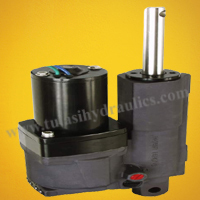Electro Hydraulic Cylinder
Tulasi Hydraulic Pvt.Ltd. is a leading Manufactures and Suppliers of cutting-edgeElectro Hydraulic Cylinders , strategically located in Mumbai, with operations extending to Navi Mumbai and Thane. As a reliable Provider and Exporter, we specialize in fabricating innovative hydraulic solutions tailored to meet the diverse requirements of various industries. Our Manufacturing company is committed to delivering high-quality, efficient products, establishing us as a trusted Dealer in the hydraulic equipment market. With a strong focus on innovation and excellence, Tulasi Hydraulic Pvt.Ltd. continues to lead the industry in India and beyond.
An electro-hydraulic cylinder, also known as an electric hydraulic actuator or electro-hydraulic servo cylinder, is a type of hydraulic actuator that combines hydraulic power with electrical control to provide precise and controlled linear motion in various industrial applications. It is essentially a hydraulic cylinder that is driven by an electric motor and controlled by electronic circuits. Electro-hydraulic cylinders offer advantages such as high precision, controllability, and energy efficiency. At the core of an electro-hydraulic cylinder is an electric motor, which can be either AC (alternating current) or DC (direct current). The motor is responsible for driving a hydraulic pump or generating hydraulic pressure to move the cylinder. In most electro-hydraulic cylinders, an electric motor drives a hydraulic pump that pressurizes hydraulic fluid (usually oil) and delivers it to the cylinder. The hydraulic pump converts electrical energy into hydraulic power. The hydraulic cylinder itself is similar to traditional hydraulic cylinders and consists of a cylindrical barrel, a piston, and a piston rod. The piston rod extends and retracts within the cylinder barrel to provide linear motion. Electro-hydraulic cylinders are equipped with sealing mechanisms, including piston seals and rod seals, to prevent hydraulic fluid leakage during operation. Electronic control valves or servo valves are used to regulate the flow of hydraulic fluid to the cylinder. These valves are controlled by electronic signals to precisely control the position, speed, and force of the cylinder's movement. Electro-hydraulic cylinders often incorporate sensors and feedback systems to provide real-time information about the cylinder's position, speed, and force. This feedback allows for precise control and closed-loop operation. An ECU is responsible for processing control signals and feedback data. It calculates the required adjustments to the hydraulic flow and sends commands to the control valves to achieve the desired motion or force.
Operators or automated control systems can interface with electro-hydraulic cylinders through various control interfaces, including manual controls, programmable logic controllers (PLCs), or computer-based control systems. They are used in automated manufacturing and assembly systems for tasks such as pick-and-place operations and part positioning. Electro-hydraulic cylinders are employed in material testing machines to apply controlled forces and measure material properties. They are used in plastic injection molding machines for precise mold movement and pressure control. Electro-hydraulic cylinders are used in aircraft control surfaces and landing gear systems for precise control. They can be found in construction and mining equipment for tasks such as bucket movement and boom control. Electro-hydraulic cylinders are used in automotive testing equipment for various testing and validation processes. They are used in drilling equipment and wellhead control systems for precise control. Electro-hydraulic cylinders are used in R&D laboratories for experimentation and testing purposes. Electro-hydraulic cylinders offer high precision, flexibility, and programmability, making them suitable for applications that demand accurate control of linear motion, force, and speed. Their ability to integrate with electronic control systems makes them valuable in modern industrial automation and control environments.

Application :
- As per ISO Standard
- Tierod construction as well as welded construction.
- Min. bore O 25 mm to Max. bore 5771 mm.
- Working pressure. a) 140 kg/cm2, b) 350 kg/cm2
- Stroke length upto 6.5 metres
- Telescopic cylinders as per customer’s requirements.
- Cylinders available. In S S For Pharmaceutical Machinery.



